Pasta is undoubtedly the queen of Italian cuisine, the specialty that made us famous all over the world and the star of our tables every day.
Thanks to its simplicity and versatility, the countless shapes and varieties on the market, pasta is the perfect base to make all sorts of recipes. But it undoubtedly gives its best when served with a scented sauce, the dressing that pays homage to our typical products and also represents an inspirantion for your creativity in the kitchen.

A top pasta dish: the 15 best Italian sauces
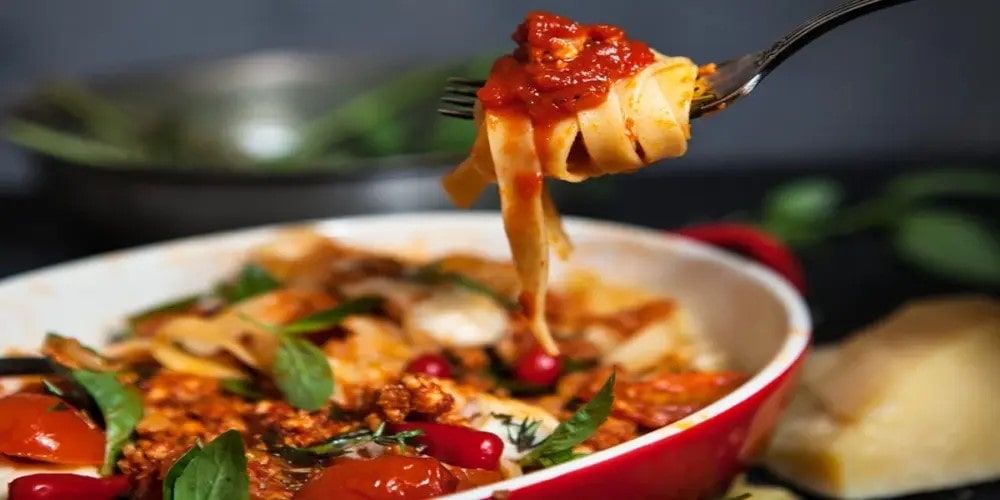
Meat, fish, vegetables, cheese or the ever-present tomato sauce? To dress pasta, sauce is always a great idea but you should know that this is not necessarily synonymous of tomatoes and basil. In our gastronomy, after all, there are countless variations – land or sea-based but also vegetarian – that let you enjoy a daily different, creative and delicious first course, following the rules of the Mediterranean diet.
From the simplest to the richest and most mouth-watering, here is our selection of the 15 best Italian traditional sauces, the timeless classics that will always delight your guests, and also all the directions you need for preparation.
15. Ragù alla bolognese

Every Italian region has its own typical ragù, but ragù alla bolognese is among the best Italian traditional sauces because it is so loved at home but also abroad. Perfect for dressing any kind of dry pasta but especially fresh egg pasta, it gives its best in a dish of homemade tagliatelle or with lasagna.
Find out how to cook it by following our recipe.
Find out Bologna and its food experiences14. Arrabbiata
As its name indicates, this Roman tradition sauce does not hide its "volcanic" character given by the generous addition of chili pepper to the tomato sauce.
As simple as tempting, arrabbiata sauce is a recipe that can be effortlessly reproduced, but that is dedicated exclusively to the most daring who are not afraid of spiciness. Versatile and easily paired with any type of pasta, arrabbiata is at its best, however, with penne rigate.
Here the ingredients for 4 servings:
400 g peeled tomatoes
3 dried chilies
1 clove of garlic
Parsley to taste
Salt to taste
Oil to taste
First start by preparing the sauté and then pour the oil into a large frying pan along with the garlic clove and previously crushed chilies (be careful not to touch your eyes before washing your hands!).
After a while, the sauté will have started to sizzle, so add the peeled tomatoes and mash them lightly; season with salt and cover with a lid to let cook about 10 minutes, stirring occasionally. Finish with a handful of chopped fresh parsley before adding the pasta.
13. Carbonara
The queen of Roman cuisine is undoubtedly the carbonara. This delicious sauce made with egg and grated pecorino cheese and enriched with guanciale (pork cheek) is certainly the most beloved dish of the Capital, highly demanded by tourists from all over the world but not so easy to reproduce.
However, thanks to the precious tips we have provided here, we are sure you will prepare a perfect one as tradition dictates: pair it with rigatoni, spaghetti or linguine for a chef-worthy dish.
12. Cacio e pepe
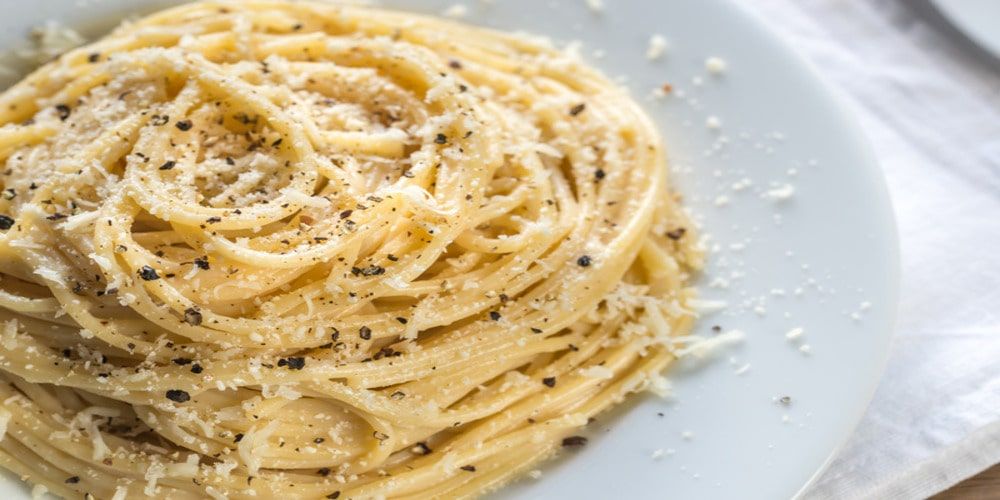
Another masterpiece of Roman cuisine, the cacio e pepe, is a seemingly simple but tricky dish, like the carbonara. It is a sauce made exclusively from grated pecorino cheese and pasta cooking water, but it requires some mastery in the amounts, which must be to the millimeter, as well as a generous final sprinkling of fresh black pepper.
But don't worry: if you follow our recipe carefully, you will have a superb cacio e pepe, for dressing tonnarelli and spaghetti like in the best taverns of Rome.
11. Amatriciana
Among the best traditional Italian sauces, Amatriciana, at the top of the classic recipes of Latium cuisine, is certainly not to be missed.
It is a flavorful and slightly spicy tomato sauce, enriched by diced guanciale, which takes its name from the town where it originated, Amatrice, in the province of Rieti, but over time has been adopted by the Roman gastronomic repertoire.
A must in every osteria and restaurant in the capital, it is perfect with any format of pasta, but especially with bucatini, spaghetti or rigatoni.
Here the ingredients for 4 servings:
400 gr san marzano tomatoes
150 gr of guanciale
Grated pecorino romano cheese to taste
One chili pepper (or chili powder)
Half a glass of white wine
Salt to taste
Oil to taste
The first step is to cut the guanciale into cubes or strips. Place it in a hot non-stick pan and let it cook without adding anything else: its own fat will be released and will be enough to ease cooking.
When the guanciale is golden brown, deglaze with the wine and let it evaporate. Remove the guanciale and in the same pan add the oil and the chili pepper, whole or powdered, and later the tomatoes that you will have previously cut into pieces, which must cook so that a nice full-bodied sauce can be created. Next, add the guanciale and stir.
The sauce is ready for the pasta: all that remains is to top it off with a nice sprinkling of pecorino cheese.
Enjoy all the Roman cuisine delicaciesSugo and béchamel sauce
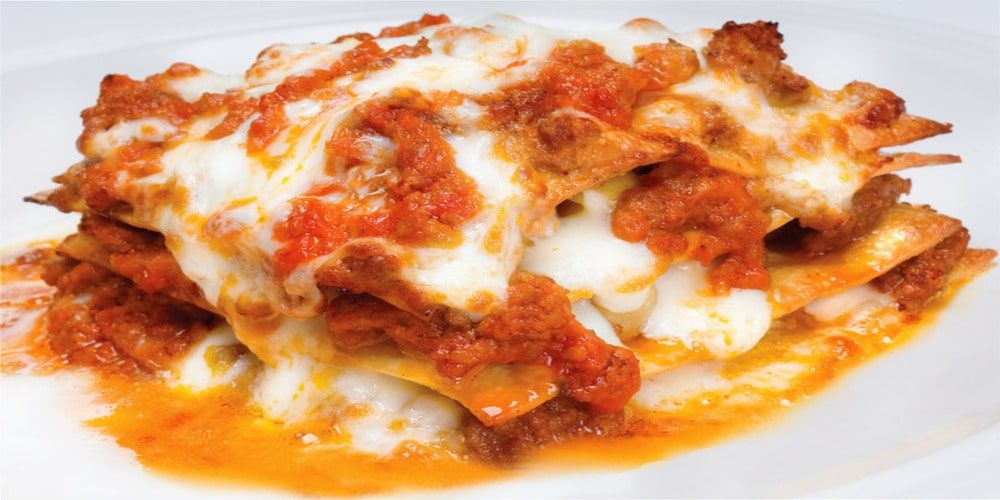
If Sunday had a smell, it would certainly be that of sugo with béchamel sauce.
Among the best traditional Italian sauces, this creamy mix requires two preparations and therefore a little more time than other recipes, but it is perfect for making lasagna, cannelloni or a baked pasta with an extra kick.
Here the ingredients for 4 servings:
1 liter of tomato sauce
50 g butter
50 gr of flour
500 ml milk
Half an onion
A few basil leaves
Salt to taste
Black pepper to taste
Grated nutmeg to taste
Oil to taste
In a high-sided pot, prepare the tomato sauce. Pour in the oil and add the chopped half onion. When golden brown, add the tomato, salt and let it cook; finish with the fresh basil leaves.
Meanwhile, in a small saucepan, prepare the béchamel sauce: let the butter melt and slowly add the sifted flour, stirring well-pay close attention to this step because lumps can easily form. When the flour is golden, pour in the milk gradually and stir with a whisk; lower the heat and stir often until the milk has thickened and a velvety cream has formed. Now add salt, pepper and plenty of grated nutmeg to give the béchamel its distinctive flavor.
You may decide to combine your béchamel with the tomato, for a smoother sauce, or pour the two preparations separately over the pasta.
9. Genovese
Despite its name, genovese sauce is one of the signature dishes of Neapolitan cuisine. With its base of plentiful onion, genovese, which takes a long time to prepare, is a blank ragù that is able to spread its enchanting aroma throughout the neighborhood and immediately evoke family lunches.
The typical recipe requires combining this sauce with ziti, a traditional Parthenopean long pasta which gets broken up, but either caserecce or classic rigatoni pasta are fine.
Here the ingredients for 4 servings:
600 g of beef swivel
1 kg of golden onions
2 glasses of white wine
A few bay leaves
Celery and carrots to taste
Salt to taste
Black pepper to taste
Oil to taste
Start by slicing the onions (this will be a long job!) and chopping the celery and carrots. When you are done, pour the oil into a high-sided pot and later add the vegetables.
Let them cook for 5-6 minutes, turning occasionally, and take care of the meat, removing the fat and cutting it into rather large pieces. Add it to the pot and add the bay leaves, salt and pepper, cover with a lid and cook on low heat for about 3 hours, checking from time to time that the ragù would not scorch.
Finally, pour in the wine and let it evaporate, checking that the sauce is concentrated enough but not too much.
8. Scarpariello
Let's stay in Naples for this summer-smelling recipe. Scarpariello, with its extreme simplicity, is one of the best sauces in the Italian tradition and in particular in the Campania region; it can be prepared quickly, with cherry tomatoes and grated cheeses, and everyone, both children and adults, likes it.
To enjoy it to perfection, we recommend pairing it with a long pasta, such as spaghetti or scialatielli, as well as paccheri.
Here the ingredients for 4 servings:
500 gr cherry tomatoes (cherry or date);
50 gr grated pecorino romano cheese.
50 gr grated parmesan cheese
One clove of garlic
A few leaves of fresh basil
Half a glass of boiling water
Salt to taste
Oil to taste
Pour some oil and the clove of garlic into a frying pan and let it brown. Meanwhile, cut the cherry tomatoes in half. The moment the garlic is golden and releases its smells remove it and add the cherry tomatoes to the pan.
At this point, take a half glass of boiling water (preferably the water used to cook the pasta) and pour enough into the pan; let the cherry tomatoes cook until they are wilted and have released their juices.
All you have to do is add the basil leaves and grated cheeses before diving the pasta into the pan.
Explore the beauties of Naples
7. Boscaiola
A delicious autumn-talking sauce, thanks to the unmistakable aroma of mushrooms, boscaiola does not actually have an original, unbreakable recipe: some prefer it with cream and others with a bit of sauce, others even add peas and bacon to it. We wish to be true to its 1980s spirit and so we will add some cream into the tomato sauce.
Ideal for a rich and flavorful pasta dish, this is a sauce that seems especially made for tagliatelle.
Here the ingredients for 4 servings:
400 gr mushrooms (preferably champignons and/or porcini or a mix)
250 gr of pork sausage
500 ml of tomato sauce
100 ml cooking cream
half an onion
Parsley to taste
Salt to taste
Oil to taste
Take the onion, chop it finely and place it in a large frying pan with some oil, and in the meantime crumble the sausage. When the onion is browned add the meat and let it cook a few minutes, then enrich with the previously washed and sliced mushrooms.
When the mushrooms are almost cooked and the liquids have been absorbed, pour in the tomato sauce, add salt to taste and cook without a lid for 6-7 minutes, stirring occasionally. When cooked, add the cream and continue stirring; a fragrant, creamy sauce will result. Top with finely chopped parsley.
6. Vodka sauce
Speaking of the 1980s, we cannot fail to mention pennette alla vodka, a very simple to prepare, fun and original first course that was the star meal at dinners with friends and can still be enjoyed in some old-fashioned taverns.
The recipe calls for a delicious sauce based on tomato and cooking cream, with the addition of diced bacon shaded with vodka, to be combined, of course, with penne or mezze penne rigate.
Here the ingredients for 4 servings:
250 g smoked bacon
500 ml tomato sauce
150 ml of cooking cream
half an onion
half a glass of pure vodka
Parsley to taste
Salt to taste
Black pepper to taste
Oil to taste
Chop the onion and place it in a pan along with the oil and cook for a few minutes. Meanwhile, cut the bacon into cubes or strips and add them to the pan. Midway through cooking, pour in the small glass of vodka and let the alcohol evaporate.
Now it is time to pour in the tomato sauce: leave on the heat until the sauce shrinks. At this point add the cooking cream and parsley and stir to make a creamy, velvety sauce.
5. Norma
Let's go all the way down to Sicily to enjoy an irresistible first course, based, of course, on eggplant.
The Norma, named after the famous opera, is a typical Sicilian recipe featuring a rich combination of fried eggplant, tomato and lots of ricotta salata, a seasoned and very tasty regional cheese, which is sprinkled generously over the pasta. How to prepare an ad hoc one? With classic rigatoni or with fusilli.
Here the ingredients for 4 servings:
2 round eggplants (about 4-500 g)
1 1/2 liters of tomato sauce
150 gr of grated salted ricotta cheese
1 clove of garlic
A few basil leaves
Salt to taste
Seed oil for frying to taste
Olive oil to taste
The first step in this recipe involves cleaning and dicing the eggplant while seed oil heats up in a pan to accommodate them. Fry the eggplant cubes until they are toasted but tender, remove them and let them rest on blotting paper; salt to taste.
Meanwhile, in a high-sided pan, pour the olive oil and brown a clove of garlic, remove it and then add the tomato sauce until it shrinks; season with salt. When it is cooked through, enrich the sauce with the eggplant and stir until blended. Top with the basil leaves.
The sauce is ready to receive the pasta and the sprinkling of grated ricotta salata as a final touch.
4. Pesto
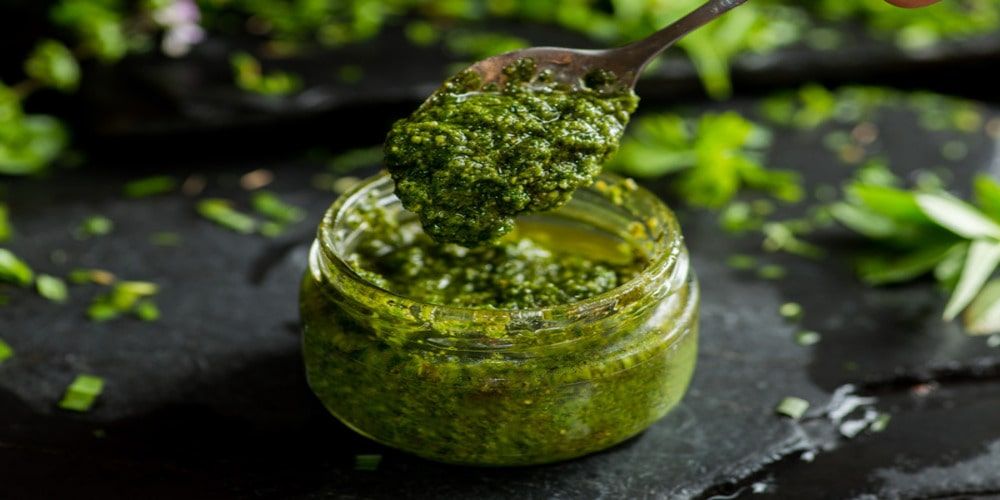
Pesto is certainly among the best traditional Italian sauces, as well as the symbol of typical Genoese cuisine, beloved all over the world.
Its unmistakable fragrance and lively flavor comes from fresh basil leaves, chopped together with Parmesan cheese, pine nuts, oil and garlic: a simple but skillful mix that can be easily reproduced if you follow a few directions; we have provided them all for you in our recipe. Make it to prepare delicious pasta dishes, especially trofie or trenette.
3. Walnuts sauce
Although Genoa immediately reminds the basil pesto, be aware that there is another delicious specialty that is part of this city's tradition, the walnut sauce.
A quick and easy dressing requiring no cooking, walnut sauce is one of the best Italian traditional sauces, both enjoyable and versatile, and should generally be paired with pansoti, a typical variety of fresh filled pasta that closely resembles ravioli.
Here the ingredients for 4 servings:
150 g shelled walnuts
50 gr of stale bread crumbs
20 gr of pine nuts
50 gr of grated parmesan cheese
100 ml milk
half a clove of garlic
Salt to taste
Olive oil to taste
First of all, soak the bread crumbs in some milk for about half an hour. After that time, try to squeeze out the crumb as best you can, but save the remaining milk. Now add it to a blender along with the walnuts, pine nuts, and the rest of the ingredients; pour in the oil and milk, add the salt, and chop until you have a creamy consistency.
2. Four cheeses
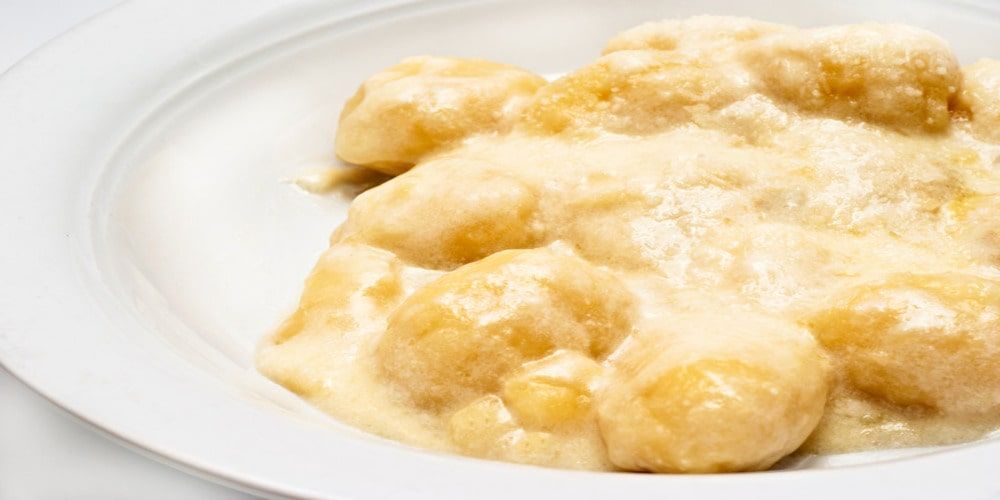
A creamy dream for cheese lovers, this rich and not exactly a diet-friendly sauce has no fixed rules in the choice of ingredients but generally calls for gorgonzola, parmesan and other rather soft types, such as fontina, caciotta or Emmenthal.
Ideal for unleashing your creativity at the table, the four-cheese sauce can be combined with cubes of ham, mushrooms, zucchini and more, to dress any type of pasta or even pizza. Here we present our variation.
Here the ingredients for 4 servings:
100 ml milk
A knob of butter
One tablespoon of flour
50 gr of gorgonzola cheese
50 gr of Emmenthal
50 gr of fontina cheese
50 gr of grated parmesan cheese
Black pepper to taste
Herbs to taste (chives, tarragon, basil or whatever you prefer)
We prepare a base very similar to béchamel in a nonstick, fairly high-sided pan by melting a knob of butter and adding flour (possibly sifted). When the flour is golden brown, pour in the milk slowly and stir until it forms a cream.
Now add the chopped gorgonzola and gradually all the previously grated cheeses. Stir until completely melted and sprinkle with black pepper and herbs, if desired.
1. Puttanesca
We complete our excursus on the best traditional Italian sauces with a note from the sea, introducing you to a classic puttanesca.
This typical summer recipe, whose origins are disputed between Campania and Latium, features tomatoes, olives, capers, anchovies and a hint of chili pepper to transport us immediately to the shores. How to taste it? With spaghetti or linguine.
Here are the ingredients for 4 people:
30 gr anchovies
500 gr of peeled tomatoes
100 gr of black olives
Capers to taste
One clove of garlic
One chili pepper (or chili powder)
A handful of parsley
Salt to taste
Olive oil to taste
Pour the oil into a pan along with the finely chopped garlic clove, chili pepper and anchovies and let it sizzle. At this point add the capers and tomatoes and wait until the sauce has set before topping it with the olives and parsley-it will take 7-8 minutes on low heat. Be very careful in adjusting the salt, because capers and olives are already very flavorful.
It's your turn to prepare the best Italian traditional sauces
You've just discovered which are the 15 best Italian traditional sauces and the pasta shapes to pair them with; now you can turn on the stove and prepare them by yourself. If you follow our advice, we are sure that you will be able to amaze your Italian and foreign guests; because pasta with sauce tastes best only when shared.
About the author
Written on 13/09/2023



Denise Penna
Craving for pasta? Here we provide a compilation of the 15 best Italian traditional sauces for super pasta dishes